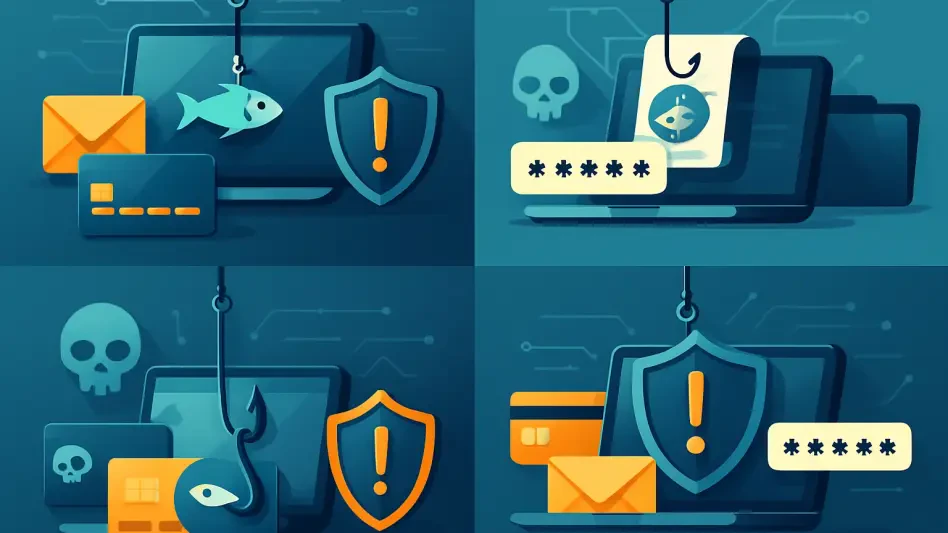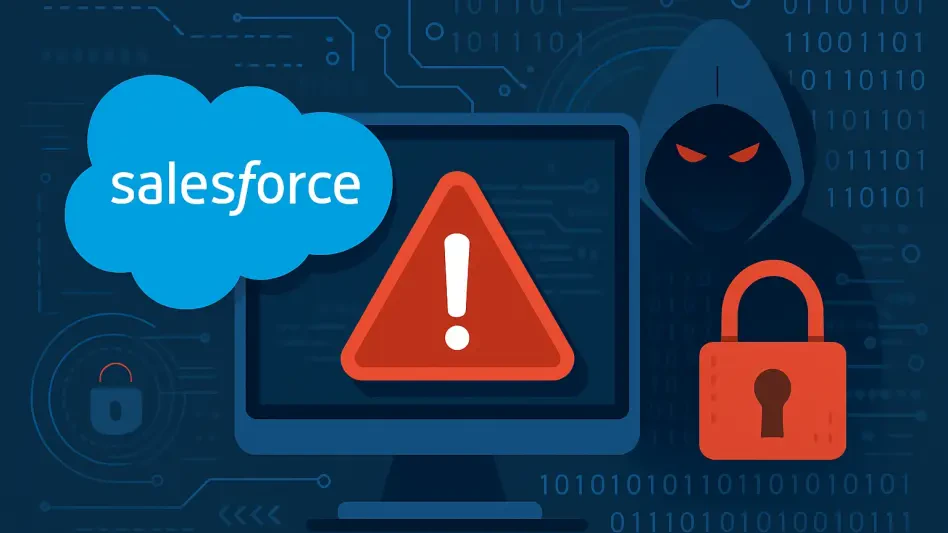In an era where digital interactions dominate daily life, the emergence of a sophisticated “point-and-click” phishing kit has sent shockwaves through the cybersecurity community, presenting an alarming challenge to both individuals and organizations who rely on technology for their everyday tasks. This user-friendly toolkit drastically reduces the technical expertise required for cybercriminals to launch highly effective phishing campaigns, making advanced attacks accessible to even novice threat actors. With an intuitive interface and preconfigured templates, this kit allows attackers to customize branding and target specific victims with precision, amplifying the risk of data breaches and financial losses. The implications of such a tool are profound, as it not only increases the frequency of attacks but also enhances their sophistication, bypassing traditional defenses with ease. As this threat continues to evolve, understanding its mechanisms and impact becomes crucial for developing effective countermeasures and safeguarding digital ecosystems.
Unpacking the Mechanics of the Threat
Understanding the Toolkit’s Design and Accessibility
The design of this phishing kit stands out for its simplicity and accessibility, enabling attackers with minimal technical knowledge to orchestrate complex campaigns. Crafted with a web-based interface, the toolkit offers a range of customizable phishing templates that mimic legitimate brands and services, tricking users into interacting with malicious content. Attackers can select targets, tailor messages, and deploy campaigns with just a few clicks, significantly lowering the barrier to entry for cybercrime. Beyond ease of use, the kit integrates advanced payload delivery systems that disguise malicious files as trusted formats, such as Microsoft Office documents or HTML Applications (HTA). These files prompt unsuspecting users to enable macros or execute scripts, initiating a cascade of harmful actions. This democratization of sophisticated attack tools signals a troubling shift, as it empowers a broader pool of threat actors to exploit vulnerabilities that were once the domain of skilled hackers, heightening the overall risk landscape.
Evasion Tactics That Challenge Traditional Defenses
A hallmark of this phishing kit lies in its innovative evasion tactics, which render many conventional security measures obsolete. By employing dynamic content injection, the toolkit frequently rotates resource identifiers on phishing pages, frustrating automated URL filtering solutions and prolonging the time malicious content remains active. Multi-step redirects further obscure the final payload download locations, making it difficult for security systems to trace and block threats before they reach victims. Additionally, obfuscated commands, often encoded and compressed, execute silently in memory using built-in scripting engines like PowerShell, avoiding detection by file-based antivirus programs. This in-memory execution ensures that no traceable malicious code is written to disk, complicating efforts to identify and mitigate the attack. Such stealthy approaches underscore the kit’s ability to bypass heuristic defenses, exploiting gaps in static signature-based systems and highlighting the urgent need for more adaptive security strategies to counter these evolving threats.
Strategies to Mitigate the Rising Danger
Enhancing Detection Through Behavioral Monitoring
To combat the sophisticated evasion techniques of this phishing kit, organizations must pivot toward behavioral monitoring as a cornerstone of their defense strategy. Unlike traditional signature-based systems, which struggle against in-memory execution and dynamic content, behavioral analysis focuses on detecting anomalies in system activity, such as unexpected scheduled tasks or unusual script executions like those involving HTA files. These indicators often signal the presence of a malicious loader fetching additional payloads, such as credential stealers or ransomware. By establishing baselines for normal user and system behavior, security teams can flag deviations in real-time, enabling quicker responses to potential compromises. This proactive approach is vital, as the kit’s persistence mechanisms, including hidden tasks that relaunch hourly under randomized names, make manual detection nearly impossible after initial infection. Prioritizing such monitoring tools can significantly reduce dwell time and limit the damage caused by these stealthy attacks.
Strengthening User Awareness and Training Programs
Equally critical in mitigating the threat posed by this phishing kit is the reinforcement of user awareness through comprehensive training programs. Human error remains a primary entry point for these attacks, as social engineering tactics convincingly mimic trusted content, deceiving users into enabling malicious macros or downloading harmful files. Educating employees to scrutinize unsolicited documents and recognize subtle red flags, such as unfamiliar senders or urgent requests, can drastically reduce click-through rates on phishing campaigns. Simulated phishing exercises can further prepare staff to identify and report suspicious activity before it escalates. Beyond recognition, training should emphasize the dangers of interacting with untrusted content, even when it appears legitimate. By fostering a culture of caution and skepticism, organizations can transform their workforce into a first line of defense, complementing technical solutions and addressing the kit’s exploitation of user trust, which has proven highly effective in early attack campaigns.
Reflecting on Past Responses and Future Safeguards
Looking back, the response to the emergence of this “point-and-click” phishing kit revealed significant shortcomings in traditional cybersecurity frameworks, as static defenses repeatedly failed to counter its dynamic evasion methods. Early campaigns demonstrated high success rates, with attackers exploiting user trust in familiar file types to deliver payloads that operated undetected in memory. The reliance on outdated detection systems allowed malicious loaders to persist through hidden tasks, often going unnoticed until substantial damage was inflicted. However, these challenges spurred a shift toward more adaptive measures, with a focus on behavioral monitoring and user education proving instrumental in curbing the threat’s impact. Moving forward, the emphasis must remain on innovation—developing advanced detection tools that anticipate evolving tactics and investing in continuous training to empower users. Collaboration across industries to share threat intelligence will also be key, ensuring that defenses stay ahead of accessible tools that blur the line between novice and expert cybercriminals.








